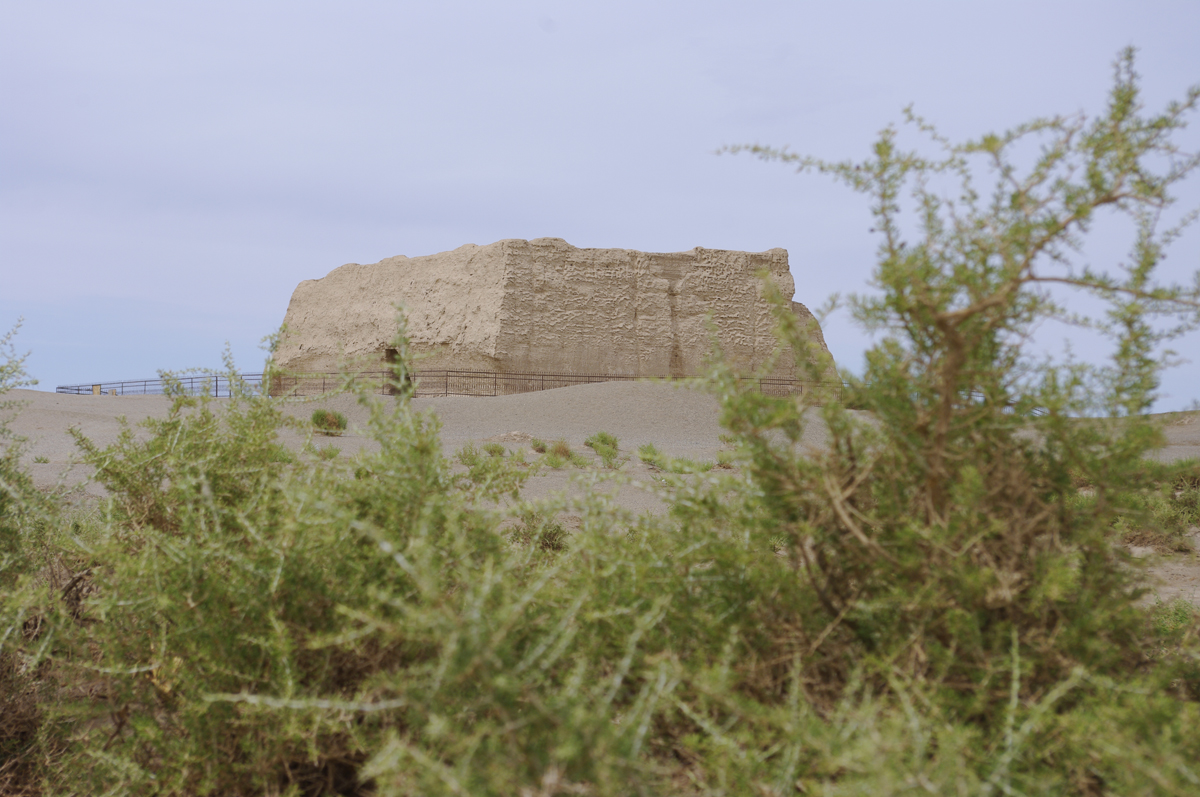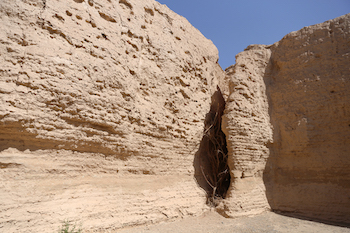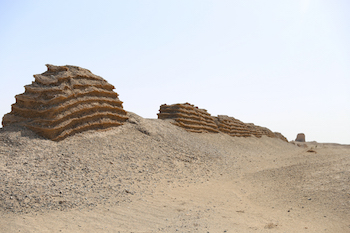
Towering over the western end of the Hexi Corridor, Yumen Pass was once a major gateway along the Great Wall and an integral part of the ancient Silk Road. Alongside Yang Pass, Yumen Pass served as the main pathway to the mysterious Western Regions. The pass’ long and colourful history began during the early Han Dynasty (206 BC–220 AD), when the western border of the country was ceaselessly invaded by the nomadic Xiongnu people, the arch nemeses of the ruling Han Chinese. Rather than meet the formidable Xiongnu warriors in battle, the early Han rulers resorted to marrying off their daughters to Xiongnu leaders in a feeble attempt to broker peace. As they say, all is fair in love and war!
When Emperor Wu rose to power in 141 BC, he was appalled by this cowardly policy and replaced it with his own strategic military agenda. In 121 BC, fierce counterattacks led by the celebrated military general Huo Qubing eventually drove the Xiongnu troops out of the west and allowed Emperor Wu to secure the western frontier. By 111 BC, the Emperor had established Yumen Pass and Yang Pass, which strengthened the border and thus helped to prevent further invasions from the Xiongnu. As time went on, it became a major trading post along the northern branch of the Silk Road. Silk, porcelain, tea, and a variety of luxury wares all passed through its humble gates. “Yumen” literally translates to mean “Jade Gate”, and it is believed that the pass is so-named because of the many jade caravans that passed through it.

According to an alternative legend, there was once a region in the west of Gansu province known as “Mamitu” or “Horse Loses Its Way”. Numerous caravans carrying jade from Hotan to Dunhuang were forced to travel through this region before arriving at Yumen Pass. The region was a mess of marshes, ravines, gullies, and weeds, making it desperately difficult to navigate. As if that wasn’t complex enough, the extremely hot weather meant that it was virtually impossible to cross during the day so many caravans chose to travel at night. The darkness, coupled with the region’s unusual topography, meant that even the most experienced merchants would frequently lose their way.
There was once a caravan that often traversed this route carrying jade and silk. One day, as soon as it entered Mamitu, the merchant became hopelessly lost. As if by magic, a wild goose suddenly dropped down in front of them. A kind-hearted boy scooped the goose up in his arms and decided he would carry it until they had escaped the treacherous Mamitu region. After some time, the wild goose turned to the boy and said: “Please give me some food, and I will help you find your way”. The boy realised that the goose had dropped not because it couldn’t fly, but because it didn’t have the energy to fly. He immediately gave the goose some food and water. Once it had eaten its fill, the goose flew into the sky and guided the caravan to the small city of Fangcheng.
It was not long before the caravan once again became lost in Mamitu. As the wild goose flew over them, he promptly stopped near the young boy and said: “Once I have guided you to Fangcheng, please promise to give me the finest piece of jade you have. I will place it in the highest tower, and it will shine so brightly that you will never lose your way again.” The boy told the merchant, but the merchant was reluctant to part with his precious cargo. After the goose had helped them, he refused to give up the jade and thought the matter was over. Who would have thought that, not long thereafter, he and his caravan would become lost in Mamitu yet again!
This time, however, it was much more serious. They were unable to find water for several days and, as they slowly weakened from thirst, they realised that they would surely die if they could not find their way soon. At that moment, the goose appeared and shouted down to the merchant: “Your caravan is hopelessly lost! Give me the jade you promised, and I will lead the way to safety.“ The merchant turned to the young boy, who advised him to kneel down and swear to the wild goose that he would keep his promise. The merchant promptly followed the boy’s advice and the goose kindly guided the caravan out of Mamitu.
Once they had arrived in Fangcheng, the merchant picked the largest piece of luminous green jade he could find and gave it to the goose. The goose flew to the top of the highest tower in Fangcheng and embedded the jade there. When night fell, the jade would shine in the moonlight and guide caravans through Mamitu. From that day forward, not a single caravan became lost, and Fangcheng became known as the Jade Gate Pass.

Unfortunately, towards the end of the Tang Dynasty (618-907), the trade route through Yumen Pass was gradually supplanted by the northern route via Hami and the pass fell into disuse. Nowadays, all that is left of this venerable military gate and trading post are a smattering of ruins, which are located approximately 90 kilometres (56 mi) from the city of Dunhuang. At the grand old age of over 2,000 years, it was considered so integral to the country’s history that it was designated a UNESCO World Heritage Site in 2014. The complex is entirely built of rammed earth and, due to years of neglect, all that remains today are the gatehouse, a beacon tower, and a small portion of the Han Dynasty Great Wall. In many ways, its desolation is part of its charm. After all, as the poem “Song of Liangzhou” by Wang Zhihuan goes: “Don’t complain that the willows do not thrive there, you should know that Spring never comes to Yumen Pass”.
Make your dream trip to The Yumen Pass come true on our travel: Explore the Silk Road in China